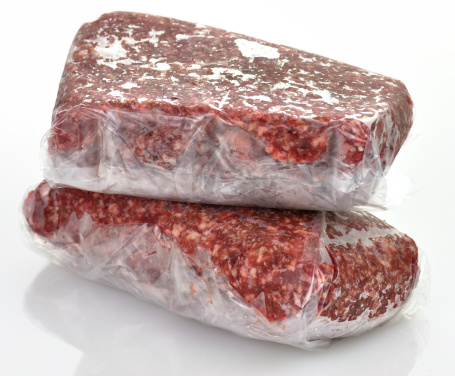 How often do you pull a frosty bag of meat out of the freezer, only to realize you have no idea how old it is? And should you let that bother you?
How often do you pull a frosty bag of meat out of the freezer, only to realize you have no idea how old it is? And should you let that bother you?
Food experts say that the duration of freezing has no effect on how safe the food is to eat. While the taste and nutrient quality of the food will degrade over time, there is no cut-off or best-before date. As long as the food is frozen and thawed properly, you needn’t worry.
Advertisement
Freezing is one of the safest ways to keep food over long periods of time. Since most diets are freezer-friendly, all you need is a few tools and some guidance.
Freezing Cooked Foods: Avoid The Danger Zone
There is a general consensus among scientists that foods between 40 and 140 degrees Fahrenheit are potential breeding grounds for all sorts of bacteria. This range is referred to as the “food temperature danger zone.” Food isn’t hot enough to kill the bacteria or cold enough to suspend its activity.
Most diets contain a lot of cooked food. To properly freeze these foods, you must refrigerate them before they cool down to the temperature danger zone. Once the food cools to about 37 degrees Fahrenheit, you can transfer it to the freezer.
Freezing Fruits: Enjoy Seasonal Favorites Year-Round
Fruits have always been considered healthy foods. But since fruits are often shipped thousands of miles, nutrient quality is diminished. Freezing fresh, locally grown fruits is a great way to enjoy them throughout the year.
Clean your hands and your prep surface well and then prepare the fruit by washing, peeling, pitting, cutting, etc. and seal it in the bag. Mark the date and contents, and freeze. An added step is to freeze the fruit first, spreading them out on parchment paper on baking sheets. This way, the fruit doesn’t clump together when it thaws.Then take advantage of those Ziploc and vacuum-seal bags.
RELATED READING: Fruits & Vegetables Linked to Longer Life Span
Freezing Vegetables: To Cook Or Not To Cook
Freezing vegetables is not quite as straightforward. Some vegetables freeze better cooked, while others freeze better raw. There are several online guides to help you decide what to do with your veggies; Garden Guides has a comprehensive one. Your diet preferences will also play a part in deciding whether or not to cook the vegetables before freezing.
Raw vegetables can be frozen the same way as fruit, but cooked veggies need to follow the guidelines for cooked food. Freezer-safe, airtight containers or jars work better than bags for storage.
Thawing: The Key To Food Safety
The process that has the largest impact on food safety is thawing. Simply taking food out of the freezer and leaving it out on the counter overnight turns a once-healthy food into a home for bacteria — they start to multiply at room temperature.
Advertisement
The best way to thaw even rock-hard poultry is moving it from freezer to refrigerator. If you need to speed the process, submerge the food, still packaged, in cold water, and keep the water cold, replacing it as it starts to warm.
Plan your freezing to maximize the space you have. Bring any older products to the front of the freezer, and store your recent additions closer to the back. Now you’re set to enjoy the convenience and ease of foods “fresh” from the freezer.
